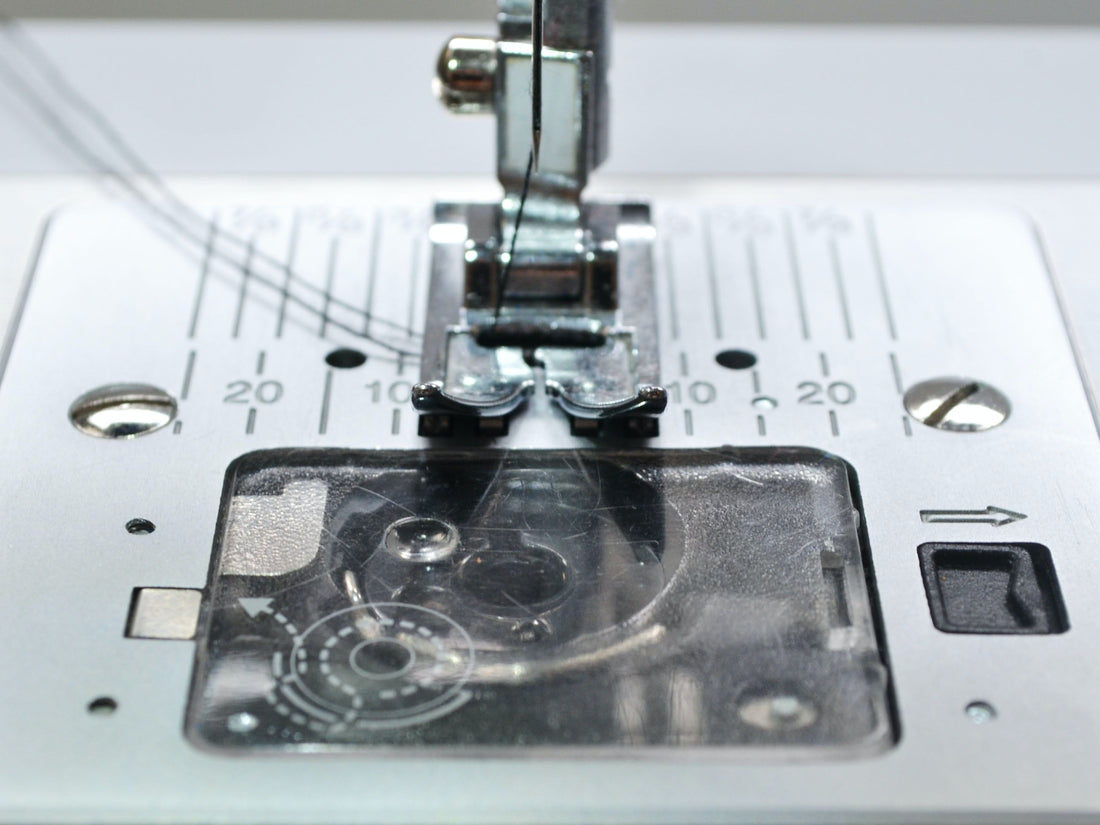
Whether you’re passionate about sewing or just starting, it’s important to know your overedge foot from your sheering foot and everything in between. Knowing which feet can achieve the look you desire will make your sewing journey a lot easier; because let’s face it, there’s nothing worse than getting a zigzag edge when you were hoping for a blind hem.
Most machines come with a few standard, interchangeable presser feet; an open-toe foot, a zipper foot, a buttonhole, and an embroidery foot. But when your confidence grows past these, there’s the option to invest further in ones designed for specific purposes.
Open-toe Foot
An all-purpose sewing foot with an open area at the front for easy viewing, an open-toe foot will be the one you become most comfortable with. The wide front will give you confidence that the stitches you place are precisely where you want them.
Blind Hem Foot
This foot can create a barely visible hem from the front, perfect for formal wear garments and curtains. Achieving a blind hem is done through a unique hem, depending on the fabric you use. For example, with a non-stretch material like cotton, you’d need to apply a large zigzag stitch with a straight stitch in between. The possibilities with a blind hem foot are endless.
Cording Foot
The beauty of a cording foot is that they snap onto the existing shank and presser foot holder of your machine. As a result, it’s easy to load and even easier to use; the guide on the top has three slots to place the cords in. Simply slide the cords in from the right, and you’re good to go. To achieve a wider stitch, use either a five-hole cording foot or a seven-hole cording foot. They work the same as the three-hole foot but just wider.
Fringe Foot
A fringe foot (also known as a looper foot or tailor tack foot) is the perfect addition to your sewing machine to create decorative, textured looks. The raised central bar in a fringe foot allows for more thread to go into each stitch, creating loops that can be manipulated to create fringe.
Knit Foot
Perfect for sewing on knit fabrics without stretching the materials, a knit foot prevents the puckering of the fabric with a small piece on the foot that holds the fabric tighter against the machine. As a result, it’s capable of working with anything from a sheer knit to heavy knits without the fear of snapping or skipping a stitch.
Non-stick Foot
If you want to work with leather but fear ruining the material or, even worse, your needle, a non-stick foot is the one for you. The foot is often made of plastic; the slick surface on the foot’s underside allows for an effortless glide on tricky fabrics. In addition, it clips onto your existing presser foot holder, making it easily interchangeable which switching materials.
Satin Stitch Foot
If you’re looking for a decorative but dense stitch, the satin stitch foot is perfect. It has a deeper channel down under it, which allows the thicker stitches to pass through without catching or jamming the sewing machine. Often this foot comes in clear plastic, allowing for extra visibility when working.
Rolled Hem Foot
A rolled hem foot includes a built-in shank which allows its best work to be done on blouses and other lightweight fabric projects. The foot automatically curves under a gem while applying a straight stitch and is available in a number of widths. A 3mm rolled hem foot and a 9mm rolled hem foot achieve a petite, narrow hem, but for a chunkier hem, a ¾ inch rolled hem foot or a 1 inch rolled hem foot might be more suited.
Don’t worry about venturing into the world of sewing machine feet; the confidence of using different materials and feet comes with time. If you have any more questions about sewing machine feet, feel free to contact our friendly team today, and they’ll be happy to help.

